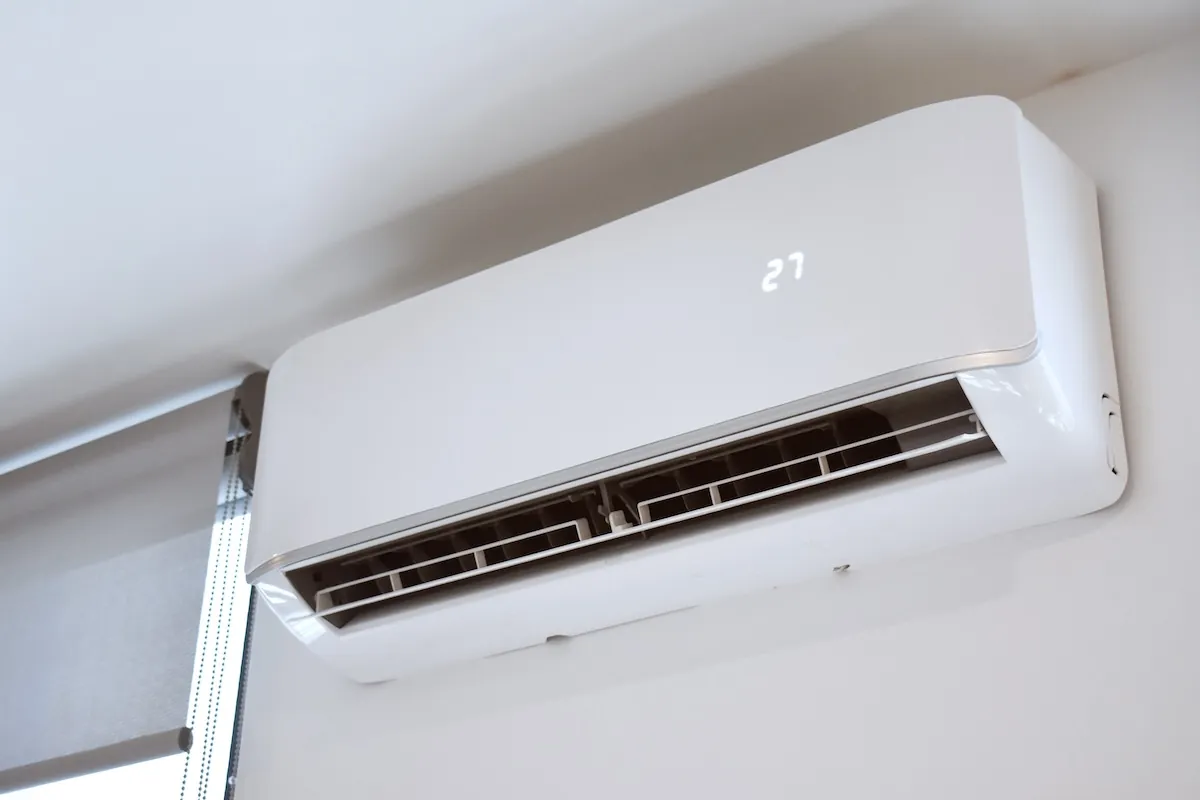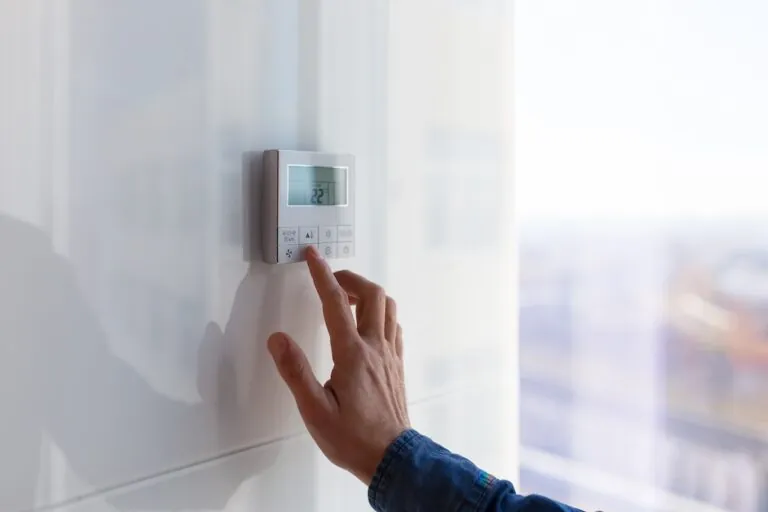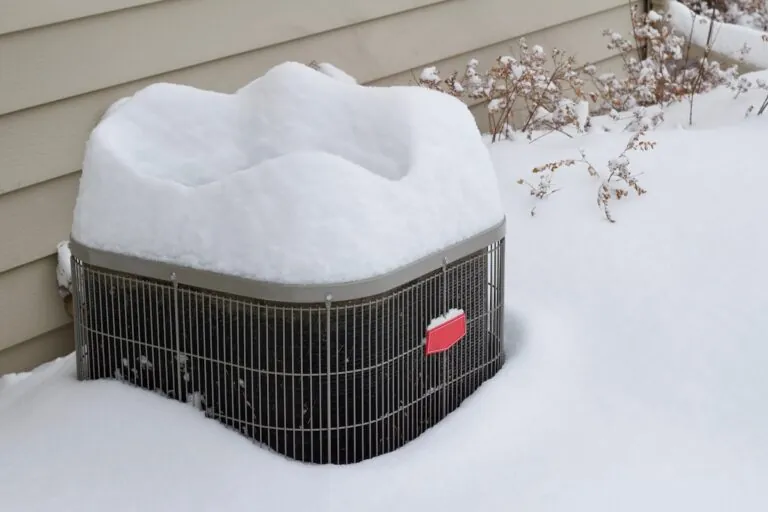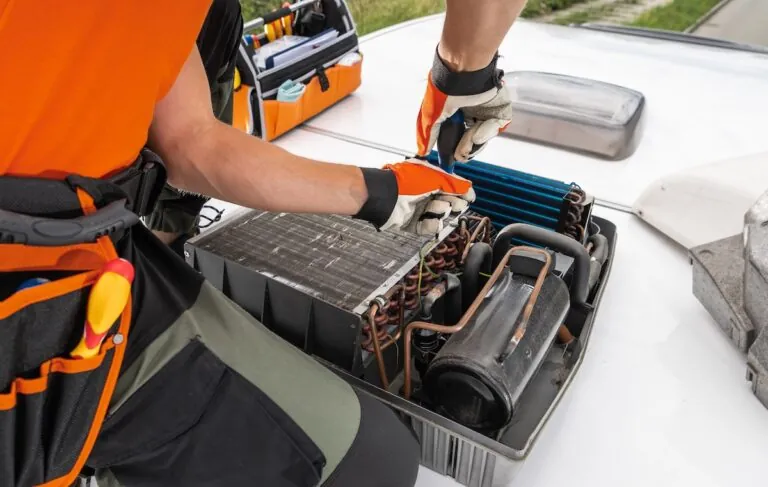If you’ve been asking yourself, “what size mini split do I need,” you’re not alone. Choosing the correct size mini split system is one of the most important steps for ensuring year-round comfort and efficiency in your home. A system that’s too small won’t keep up on hot or cold days, while one that’s too large will waste energy, cycle on and off too often, and wear down faster.
- Comfort and performance: The right size ensures even heating and cooling in every room.
- Energy efficiency: Proper sizing lowers utility bills by preventing wasted energy.
- System longevity: Correct sizing reduces unnecessary wear and extends equipment lifespan.
❗️ Why Mini Split Sizing Matters
Unlike traditional central HVAC systems, ductless mini splits heat and cool spaces directly. Each indoor unit serves a specific area, or zone, which means choosing the right capacity (measured in BTUs) is essential for balanced performance. Installing a unit that’s too small will leave you uncomfortable, while an oversized unit can short-cycle and break down prematurely.
In Minnesota homes, whether in Maplewood or surrounding areas, mini splits are becoming popular for their flexibility. Homeowners use them to supplement existing systems, condition additions, or even replace central air in smaller homes. But the key to success is sizing them properly.
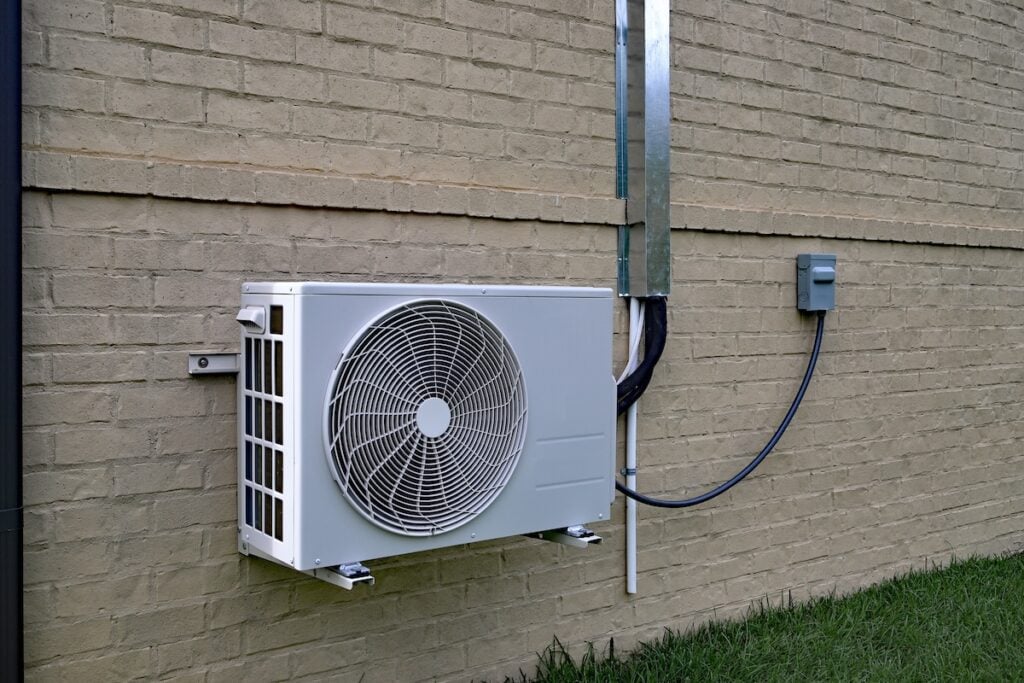
👉 How Mini Split Capacity Is Measured
Mini splits are sized by their cooling and heating capacity, measured in British Thermal Units (BTUs). The higher the BTU rating, the more space the unit can condition. Residential mini splits typically range from 6,000 to 36,000 BTUs, with larger capacities used for multi-zone systems or commercial spaces.
As a rule of thumb, about 20–25 BTUs are needed per square foot of living space. However, this rule doesn’t account for other important factors like insulation, window placement, ceiling height, or how much sun the room gets. That’s why a professional load calculation (called a Manual J calculation) is the most reliable way to size your system.
⭐️ Factors That Affect Mini Split Sizing
Before deciding on a unit, consider these major factors that influence how many BTUs you’ll need.
Room Size and Layout
The square footage of the room is the starting point for sizing. A 300-square-foot bedroom may only need a 6,000 BTU unit, while a 1,000-square-foot living room with high ceilings could require 18,000 BTUs or more. Open layouts often need larger systems since air travels farther and conditions more space.
Insulation Quality
Homes with good insulation hold conditioned air better, meaning they may require less capacity. Older homes with poor insulation or single-pane windows need more BTUs to maintain comfort.
Sunlight and Heat Gain
South-facing rooms or those with large windows that receive direct sunlight will heat up faster in the summer. These spaces often need a higher-capacity mini split compared to shaded rooms.
Ceiling Height
Standard calculations assume ceilings are about eight feet tall. If your home has vaulted ceilings, you’ll need additional capacity since the volume of air is greater.
Number of Occupants
People generate heat, so rooms regularly occupied by more people (like living rooms or kitchens) may require more BTUs than bedrooms or offices.
Local Climate
In Minnesota, long, cold winters put extra demand on heating. Choosing a system designed for cold-climate performance ensures your mini split continues to deliver reliable heat even when temperatures drop below zero.
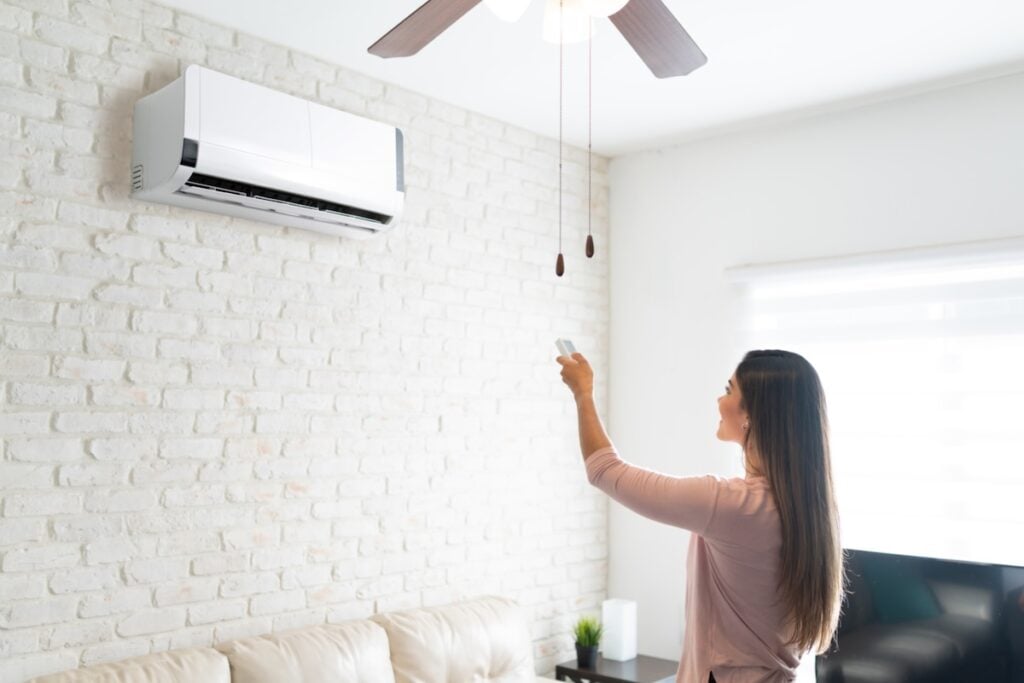
🏠 Mini Split Sizing Chart by Room Size
Here’s a general guideline to help answer the question, “what size mini split do I need” based on room size.
| Room Size (sq. ft.) | Recommended Capacity (BTUs) |
| Up to 350 sq. ft. | 6,000 – 9,000 BTUs |
| 350 – 500 sq. ft. | 9,000 – 12,000 BTUs |
| 500 – 750 sq. ft. | 12,000 – 18,000 BTUs |
| 750 – 1,000 sq. ft. | 18,000 – 21,000 BTUs |
| 1,000 – 1,250 sq. ft. | 21,000 – 24,000 BTUs |
| 1,250 – 1,500 sq. ft. | 24,000 – 30,000 BTUs |
| 1,500 – 2,000 sq. ft. | 30,000 – 36,000 BTUs |
These numbers are averages. A small, shaded bedroom in Maplewood may need fewer BTUs, while a sun-filled living room with tall ceilings may need more.
❌ Common Mistakes Homeowners Make With Mini Split Sizing
Even with charts and averages, mistakes happen. Here are some of the most common errors.
- Choosing based only on square footage: Ignoring insulation, sunlight, or ceiling height can result in under- or over-sizing.
- Oversizing for “extra power”: Bigger isn’t better—an oversized unit cycles too often, leading to inconsistent temperatures and wasted energy.
- Undersizing to save money: A too-small unit runs constantly, increasing wear and tear while still leaving you uncomfortable.
- Not planning for future use: If you’re finishing a basement or adding a home office later, factor those needs into your system choice.
✅ Multi-Zone Mini Split Sizing
Mini splits can serve multiple rooms with one outdoor unit connected to several indoor air handlers. Each indoor unit needs to be sized correctly for its room, and the total capacity must match the home’s overall load.
For example:
- A 12,000 BTU unit may serve a 450-square-foot living room.
- A 9,000 BTU unit may cover a 300-square-foot bedroom.
- A 6,000 BTU unit may work for a small office.
Together, these add up to 27,000 BTUs of capacity that the outdoor unit must support. Proper planning is critical to ensure balance and efficiency across all zones.
🧑🔧 Professional Load Calculations: Why They Matter
While charts and rules of thumb are helpful, only a professional load calculation gives you a precise answer. HVAC technicians use Manual J software to measure heat gain and loss based on your home’s size, insulation, orientation, windows, and even local weather data. This ensures your system is perfectly matched to your home’s unique needs.
Professional sizing also helps you choose between different types of mini splits—single-zone, multi-zone, or even cold-climate heat pump models—so you don’t spend more than necessary while still getting reliable comfort.
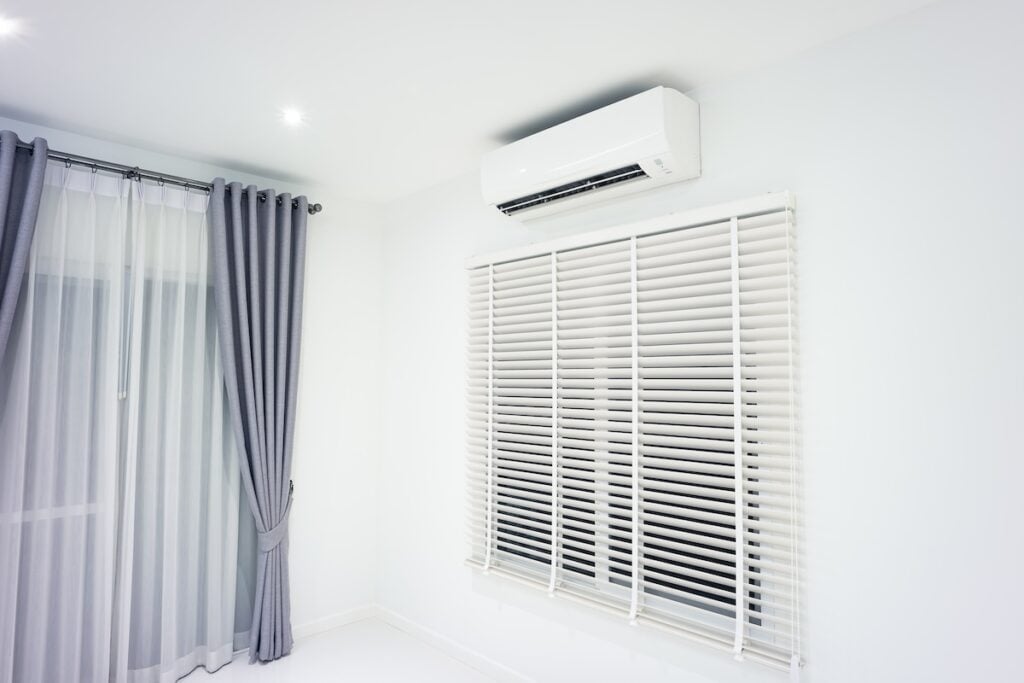
⭐️ Benefits of Correctly Sized Mini Splits
Choosing the right size mini split comes with big advantages:
- Comfort and Even Temperatures: A properly sized unit keeps your rooms at a steady, comfortable temperature without hot or cold spots.
- Lower Energy Bills: Correct sizing prevents wasted energy from oversized systems or overworked undersized ones. That means lower utility costs every month.
- Longer System Lifespan: Mini splits that are correctly sized don’t cycle too often or run constantly. This reduces wear and tear, helping your system last longer.
- Better Humidity Control: Mini splits don’t just control temperature, they also help regulate humidity. Proper sizing ensures balanced humidity levels, which improves comfort and protects your home from excess moisture.
❗️ Tips for Homeowners Shopping for Mini Splits
- Get a professional evaluation: Don’t rely solely on online calculators—local HVAC expertise is key.
- Consider cold-climate models: In Minnesota, choose a unit rated for low outdoor temperatures.
- Think about future needs: If you may finish a basement, add an office, or remodel, choose a system with flexibility.
- Don’t overlook maintenance: Even perfectly sized systems need regular cleaning and tune ups to perform well.
🏠 Find the Right Mini Split for Your Home
If you’ve been wondering, “what size mini split do I need,” the answer depends on more than just square footage. Room size, insulation, ceiling height, and Minnesota’s tough climate all play a role in determining the right system. Charts and averages are a good starting point, but nothing replaces a professional load calculation for peace of mind.
Genz-Ryan has been helping Maplewood homeowners find the perfect comfort solutions for decades. Our experts can size, install, and maintain mini split systems designed to keep you comfortable year-round. Contact us today for a free quote and let us help you choose the right system for your home.



